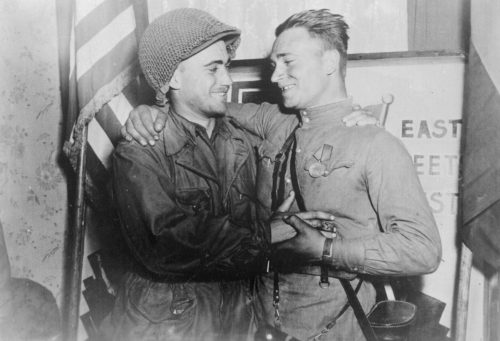April 25 in U.S. military history
1846: When Maj. Gen. (and future president) Zachary Taylor receives reports that Mexican forces – seeking to reclaim Texas – have crossed the Rio Grande, he dispatches two companies of dragoons (mounted infantry) to investigate. The American soldiers are ambushed by some 1,600 Mexican soldiers and those not killed are taken prisoner.
The Mexican-American War has begun.
1914: Navy lieutenant Patrick N.L. Bellinger flies the first naval combat mission when his AB-3 flying boat conducts reconnaissance of Veracruz and searches the Mexican harbor for mines. Bellinger also becomes the first American aviator to be fired upon by the enemy.
1915: Australian and New Zealand soldiers land on Turkey’s Gallipoli Peninsula and face fierce resistance from Lt. Col. Mustafa Kamal’s Turks. Kamal orders his defenders, horribly outnumbered and out of ammunition: “Men, I am not ordering you to attack. I am ordering you to die. In the time that it takes us to die, other forces and commanders can come and take our place.”
After an eight months of fighting and 300,000 casualties, the Allies withdraw. Kamal, later known as Ataturk, will become Turkey’s first president.
1944: When an Army Air Forces observation plane carrying wounded British soldiers goes down 100 miles behind Japanese lines in Burma, Lt. Carter Harmon (featured image, top left) conducts the first known military helicopter rescue. His YR-4B helicopter can carry only one passenger, so Harmon must fly four trips to extract the crew.
A U.S. Army reconnaissance patrol crosses the Elbe River and makes contact with a forward element of the Russian Guards. The German Wehrmacht is effectively split in two. Meanwhile, the Nazi occupation army in Italy surrenders and the last German troops in Finland evacuate.
The war in Europe will be over in days.

1951: On the 36th anniversary of their ill-fated landing at Gallipoli, two battalions of Australian and New Zealand forces (along with U.S. and Canadian troops) repulse an assault by an entire Chinese division in the Battle of Kapyong. UN casualties are in the dozens, while over a thousand Chinese lay dead.
1960: The nuclear-powered submarine USS Triton (SSRN 586) arrives at the St. Peter and Paul rocks in the Atlantic Ocean, becoming the first vessel to cross the globe submerged. Triton traveled 26,723 nautical miles in only 60 days.
1967: 51 years to the day after Bellinger’s first Naval combat mission, one of the two pilots to fly the U.S. military’s first-ever combat mission passes away at Andrews Air Force Base. Maj. Gen. Benjamin D. Foulois began his service as an infantry officer, serving in both the Spanish-American War and Philippine-American wars.
He then went on to become one of America’s aviation pioneers: the first military pilot to teach himself to fly, the first Army dirigible pilot, and first military observer on a cross-country flight with Orville Wright before flying during the Pershing Expedition into Mexico and World War I.
